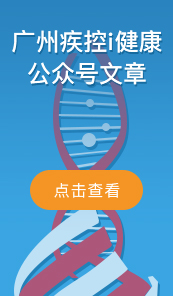一提到壽司,我們會馬上聯想到日本的飲食習慣。不錯,我在日本學習期間,也體驗了日本的“食文化”。絕大多數超市和食店里都有大量新鮮的壽司(Sushi)和刺身(Sashimi),品種繁多,十分誘人。日本人天生就適合吃壽司和刺身,這一說法一點都不為過,這也與日本的海島環境密切相關。目前,至少有一項研究得到如下結論:美國人的腸道不適合吃壽司。而日本人的腸道細菌中有一種酶可以幫助消化海藻,而美國人腸道內缺少該酶。而且,日本人可能通過食入靠海藻生存的細菌而獲得了該酶。
法國化學家Mirjam Czjzek并沒有著手去比較跨文化的飲食習慣。相反,他對“需要什么物質消化海藻”這一課題很感興趣。與陸地植物不同,構成海藻的碳水化合物含有許多硫分子,因此需要特殊的酶來分解這些分子。
為了弄清楚哪些酶是必須的,Czjzek及其同事開始了所謂的“海洋細菌基因組的尋寶計劃”。他們把精力放到一種以海藻為食的海洋細菌“Zobellia galactanivorans”上(見附圖),并在該菌基因組內發現5個基因可能編碼分解海洋藻類碳水化合物的酶。當研究者將這些基因轉化進入另外一種細菌,使其利用碳水化合物時,發現有2個酶起作用。
Czjzek懷疑其它基因可能也在起作用。于是他利用BLAST搜索環境細菌的基因組數據,以尋找與這2株細菌基因相匹配的序列。結果,“海洋細菌以外,只發現一種細菌含有相匹配的序列,這種細菌來源于人腸道標本。”這種細菌叫做Bacteroides plebeius,而且只見于日本人的腸道。為了證實這種細菌是否為日本人所特有,Czjzek研究小組比較了13位日本人與18位北美人的微生物基因組,發現5位日本受試者含有該酶,但北美人中無一人含有此酶。該結果已發表于Nature雜志上。
人腸道內的細菌到底是從哪獲得可以消化海藻的酶呢?Czjzek推測他們可能已經找到答案。根據公元8世紀日本社會的賦稅記錄,當時海藻是作為一種支付手段的。“這一事實彰顯了這種海藻食物的重要性”。有了海苔,海藻就用于卷壽司或裙帶菜(一種醬湯里使用的海草),且每日食用,這樣腸道內的細菌就有機會從其海生同類接受遺傳物質。“以前,日本人生吃海藻,可直接接觸海藻”。
細菌能夠利用一些額外的碳水化合物,使得它們比腸道內其它細菌更有生存競爭力,也有利于人類宿主。因為腸道內細菌可從人類的酶所不能分解的碳水化合物獲得能量,這些生存的適者幫助日本人以海草為食物,能夠比北美人獲得更多的營養。
康奈爾大學的微生物學家Ruth Ley評價說,科學家們一直都認為腸道細菌可能通過水平基因轉移的方式從其它微生物獲得基因,“但以前沒有這么明確的例子”。“我認為這是人類第一次證明人類的文化是如何影響腸道[細菌]這一命題的”。
感興趣的朋友可以點擊以下鏈接延伸閱讀
http://news.sciencemag.org/sciencenow/2010/04/japanese-guts-are-made-for-sushi.html

附圖:左圖為海藻;右上角的附圖顯示的是以海藻為食的海洋細菌Zobellia galactanivorans
Japanese Guts Are Made for Sushi
Americans don't have the guts for sushi. At least that's the implication of a new study, which finds that Japanese people harbor enzymes in their intestinal bacteria that help them digest seaweed--enzymes that North Americans lack. What's more, Japanese may have first acquired these enzymes by eating bacteria that thrive on seaweed in the open ocean.
Mirjam Czjzek didn't set out to compare cross-cultural eating habits. Instead, the chemist at the Station Biologique de Roscoff, on the coast of Brittany in
To figure out exactly which enzymes are necessary, Czjzek and colleagues embarked on what she calls "treasure-hunting in the marine bacterial genome." The researchers focused on Zobellia galactanivorans, a marine bacterium known to munch on seaweed. The hunt turned up five genes in Z. galactanivorans that seemed to code for enzymes that could break down the particular carbohydrates found in the marine algae. When the researchers transferred these genes to another bacterium forced to eat seaweed carbohydrates, they found that two genes were particularly active.
Czjzek wondered where else these genes might be lurking. So she used a computational method known as BLAST to scan vast banks of metagenomic data—the genomes of bacteria gathered from the environment—for sequences that matched up with the two Z. galactanivorans genes. That's when the surprise came.
"They were all, except one, from marine bacteria," Czjzek says. "The one exception ... came from human gut samples." The bacterium in question is known as Bacteroides plebeius, and it has been found only in Japanese people. Wondering whether the enzymes were unique to Japanese individuals, Czjzek's team compared the microbial genomes of 13 Japanese people with those of 18 North Americans. Five of the Japanese subjects harbored the enzyme, but among the North Americans, "we didn't find a single one," says Czjzek, whose team reports its findings tomorrow in Nature.
Where would bacteria inside the human gut get ahold of a seaweed-digesting enzyme? Czjzek speculates that they could have grabbed it from bacteria that live on the seaweed. She notes, for example, that according to tax records dating back to the 8th century C.E., seaweed was used as a form of payment in Japanese society. "That shows the importance of this type of good," Czjzek says. With nori, the seaweed used to wrap sushi or wakame, a green seaweed often served in miso soup, being consumed day after day, the bacteria in the gut would have a chance to incorporate genetic material from their marine-dwelling cousins. "Traditionally, [the Japanese] eat [seaweed] raw, not sterile," says Czjzek. "This makes the contact possible."
The ability to munch on a few extra carbohydrates might have given these gut bacteria a leg up over their thousands of competitors, says Czjzek. It also may help their human hosts. Because gut bacteria can squeeze energy from carbohydrates that human enzymes can't break down, these adapted microbes might help Japanese who dine on seaweed get more nutrition from their meal than do North Americans, she says.
Scientists have thought that gut bacteria might pick up genes from other microbes, a process known as lateral gene transfer, "but there hasn't been an example this clear before," says Ruth Ley, a microbiologist at Cornell University. "I think it's the first demonstration of how people's culture has impacted the [bacteria in the] gut."
(編輯:李孝權)





